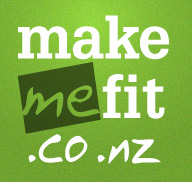While you might experience some mild to moderate (ok, more than moderate) discomfort for few days, DOMS is generally pretty harmless and can actually have some benefits.
DOMS stands for delayed-onset muscle soreness (also known as exercise-induced muscle damage). This condition is caused by microscopic tears in muscle fibres when you perform eccentric muscle contractions (lengthening of a muscle while force is applied, also known as negatives-think lowering phase of a bicep curl exercise), at intensity or duration you are not accustomed to. This damage induces an immune response, and accompanied with certain biochemical events, causes swelling, soreness and restricted range of movement during the ensuing 12-72 hours. Although unpleasant (to put it mildly!), this healing process actually causes your muscles to become bigger and stronger. This is not to say that pain must be present to achieve gains in fitness. If you are in pain after most of your workouts, it’s probably a good idea to reassess your exercise plan.
It is also important to know the difference between DOMS and an injury. Experiencing acute pain during an activity is not DOMS. It is usually a sign of too high intensity, poor form or an inappropriate movement. This may cause muscle or joint injury and it is advisable to stop or modify the activity in question. Furthermore, an injury is more likely to cause pain on one side of the body, while DOMS is usually symmetrical. DOMS does not feel worse with light activity, while an injury usually worsens with continued use of the injured part.
While there is not much you can do to prevent DOMS, apart from personalised and gently progressive exercise program, there are couple of things you can do to reduce the severity of the symptoms. Our recommendation for ‘DOMS sufferers’ is to take it easy for the next day or so, but not necessarily to stop exercising. Light activity will neither speed up or slow down the recovery process, but may temporarily ease the symptoms. So can a gentle massage. It is not advisable to ‘push through the pain’, as it may prolong your recovery and slow down your progress. Studies on stretching, cold therapy and DOMS showed little or no effect on the muscle soreness experienced in the week after the physical activity.
Let us know in the comments below what has worked for you in the past and how you manage DOMS?
References:
1. Robergs, R. A., & Roberts, S. O. (1997). Exercise Physiology: exercise, performance and clinical application. St. Louis, Missouri: Mosby
2. Cochrane Review. Retrieved from: http://onlinelibrary.wiley.com/doi/10.1002/14651858.CD004577.pub3/abstract
3. ACSM. Retrieved from: http://www.acsm.org/docs/brochures/delayed-onset-muscle-soreness-(doms).pdf?sfvrsn=2
4. PubMed. Retrieved from: http://www.ncbi.nlm.nih.gov/m/pubmed/12617692/
Need a gym lingo explanation or have a fitness related question? Please contact us and we will endeavour to include it in a future post.
